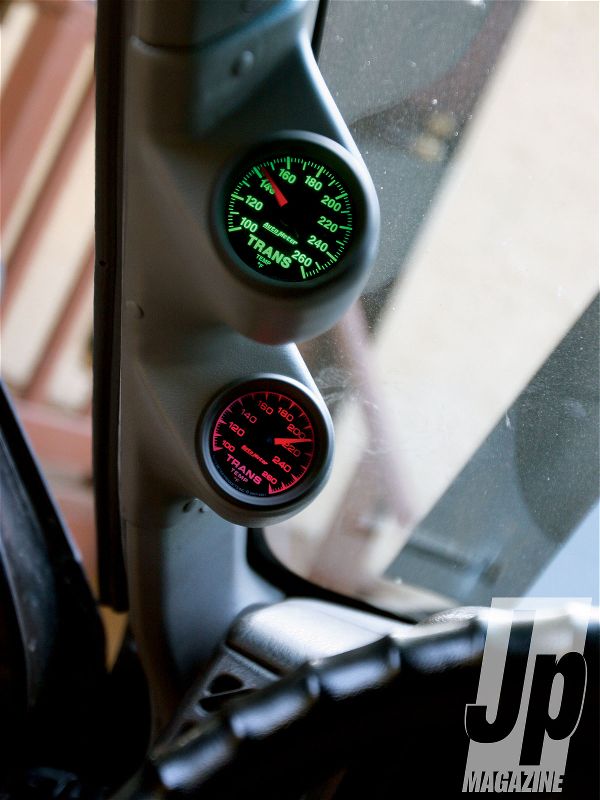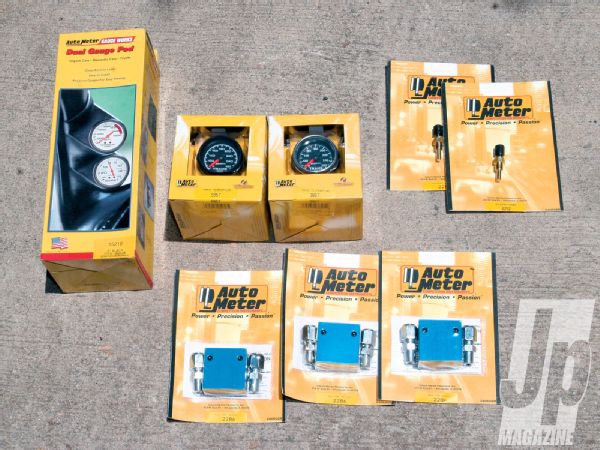
 Pete Trasborg
Brand Manager, Jp
Pete Trasborg
Brand Manager, Jp
We don't trust automatic transmissions, and given our choice, we'd stick with a manual in every Jeep we have. That said, our '98 Cherokee came from the factory with an AW4, and swapping it out requires sourcing of hard-to-find late-model XJ clutch pedal parts and a spendy computer swap to kill the check engine light.

The AW4 is the best overdrive automatic transmission the factory ever put in a Jeep and they commonly can run over 200,000 miles with regular fluid changes. Ours is at 238,000 miles and we recently came to an alarming observation: We are killing it. Don't get us wrong, we are doing everything right: We change the fluid with regularity, we are using Royal Purple ATF, we kick it out of overdrive for long grades or when hauling heavy loads, and we swap filters when we change fluid.
However, we have come to the realization that we are overheating our slushbox and that is the single most common cause of automatic transmission failure. Our beloved manual transmissions aren't nearly as susceptible to heat, but when we installed a DashDAQ in this Jeep we found it was able to monitor an alarming number: the transmission temperature. While going up steady grades at ambient temperatures of 90 degrees or more, our AW4 frequently sees 240-250 degree oil temperatures. It also tops 200 degrees when crawling. According to the factory service manual, the operating range for the AW4 is 125-176 degrees.
 Before you go spending any coin on coolers, hoses, and fittings, check to make sure you have a problem. If you've modified your Jeep with bigger tires, and take it crawling or get stuck in traffic (lack of airflow) odds are good you are running your transmission past its accepted design parameters. We tapped Auto Meter to help us figure some things out. We picked up a few transmission temp manifolds (PN 2286), some full-sweep gauges, and some extra senders (PN 2252). We mounted the manifolds and senders in various places in the system to monitor the temp real-time.
Before you go spending any coin on coolers, hoses, and fittings, check to make sure you have a problem. If you've modified your Jeep with bigger tires, and take it crawling or get stuck in traffic (lack of airflow) odds are good you are running your transmission past its accepted design parameters. We tapped Auto Meter to help us figure some things out. We picked up a few transmission temp manifolds (PN 2286), some full-sweep gauges, and some extra senders (PN 2252). We mounted the manifolds and senders in various places in the system to monitor the temp real-time.
For every 25 degrees over the maximum operating temperature, you take about half the life expectancy from the transmission, so our transmission has had its lifespan cut down to about a third of what it should be.
Throw the baby out with the bathwater, that's us. Once the transmission started slipping, we went looking into cooling solutions. It was then we learned all of the handy aforementioned figures. Regardless of what automatic transmission you have, figure out what the operating temperature is supposed to be, put a temp gauge on it, and if needed, fix it before it is too late. We all push our Jeeps further and harder than the original design parameters, and an ounce of prevention is worth a pound of cure.
In this case, we went ahead with a few hundred pounds of cure squeezed into the proverbial 5-pound bag. Yeah, we waited too long to do this. Yeah, we went way gonzo on the cooler size. And, as always, opinions are like... um...well, you know. Use some common sense when protecting your automatic transmission.
Don't listen to the guy who says, "Here is what you need." The reality of it is that the correct way to route your auxiliary cooler depends on your driving style, the weight and build of your Jeep, and your climate. You want that slushbox at that operating range all the time. If that means including the radiator, putting an auxiliary cooler (or two) on it, or running the fluid through an ice box, it's your call. No two applications are the same. Start with installing a temp gauge and go from there.
That said, our '98 XJ is a bit of a porker, we see a lot of freeway mileage with elevation changes, we often haul parts in it (axles, engines, and so on), we live in southern California, and our recreational use of the Jeep sees us many miles off in the desert with camping gear for many days. Our transmission cooling needs might be more than what you need, but we still learned a bunch on our journey, and you will be able to apply some of our tips to your slushbox-powered Jeep for more worry-free mileage.
PhotosView Slideshow







